
These Designers Make the Most Beautiful, Radical Gardens We’ve Seen
With a portfolio of high-profile, slightly wild, forward-thinking gardens, Terremoto is the landscape design firm we need more than ever.

Terremoto created some wildly offbeat landscaping at Scribe Winery, in Sonoma. Photo by Thomas J. Story.
The day I met David Godshall, one of the founding members of the progressive landscape architecture firm known as Terremoto, I climbed the concrete steps outside his home in East Los Angeles, opened a worn hinged gate, and saw his garden for the first time. What I found was not quite what I was expecting, yet it made perfect sense. Rather than the composed plants and austere rigor of the poolside landscaping Terremoto designed for actor Mandy Moore, for example, Godshall’s own garden was a tangle of mostly native and low-water plants, placed in a way that seemed haphazard but that the plants seemed to love. A dirt path was surrounded by bursts of unruly pitcher sage, sprawling California buckwheat, and Ceanothus ‘Ray Hartman’, all flourishing under the canopy of a Western sycamore. Cross-sawn timber planks from fallen local trees that otherwise would’ve been pulped were scattered through the yard like mini-bridges for his kids to play on. Raised beds tumbled down the slope. A fashionable composter (yes, there is such a thing) sat under the eaves of a house painted black. Meanwhile, in one corner, a clawfoot cast- iron bathtub sat on a humble wood-plank base. This, I found out, is where Godshall likes to bathe.

Thomas J. Story
Like any great garden, Godshall’s is a work in progress, but every element has a purpose and a benefit, and while it’s a little bit wild and by definition organic, it’s thoroughly considered and totally works. It turns out that Godshall and his partner, Alain Peauroi, founded Terremoto—the word means earthquake in Spanish and Italian—at this house in 2014. Since then, they’ve set off an upheaval of sorts in the garden world with a design sensibility that’s tranquil in execution while also being built on progressive maxims of how gardens should be made. These maxims incorporate climate, fair labor, and water concerns, along with a strong leaning toward regionally appropriate native or climate-adapted low-water plants, and the preference for a considered yet slightly unkempt look that’s good for biodiversity and looks fantastic.

Caitlin Atkinson
Sexy gardening combined with seemingly unsexy principles has made Terremoto a huge success. Godshall and Peauroi have taken on two more partners, Jenny Jones and Story Wiggins, and their offices in Los Angeles and San Francisco employ some 24 staffers, and complete approximately 25 residential and commercial gardens each year. They’ve twice made the AD 100—a list of the top interior and garden designers in the country, while their projects are a heady mix of the humble and the high-end. Terremoto does everything from residential gardens for the creative working class to photo-shoot-ready landscapes for celebrities like Kirsten Dunst and the Beastie Boys’ Adam Horovitz, to corporate jobs such as a 650,000-square-foot project for Dropbox (which was completed right before the COVID-19 shutdown of March 2020), along with the gardens at Platform Park in Culver City. They also excel at prestige projects like the historic residential architectural experiment Sea Ranch Lodge, 100 miles south of San Francisco. When someone with a Schindler, Eichler, or Neutra needs a garden, Terremoto is often who they call.

Caitlin Atkinson
Yes, Terremoto is cool. But they’re also deadly serious about being cool to plants and animals and people, which, yes, makes them even cooler. They give potential clients a “syllabus” on how they work. Like the syllabi you may have gotten in college, theirs is organized by subject: “Climate Change and Ecology,” “Land and Labor,” and “Community, Context, and History.” It’s a document that says things like, “Terremoto believes [gardens are] mirrors of our wider society, reflecting the complex social, ecological, and economic forces that shape our past, present, and future. In that way, gardenmaking [sic] is an inherently political act and a reflection of our individual and collective priorities and values.” In other words, Terremoto is here not only to do what they refer to as “gardenmaking,” but also to make the world a better place, one garden at a time.
When I find Godshall and one of his partners, Jenny Jones, they’re sitting on mismatched chairs in a nook that’s walled off by lots and lots of plants. In person, he comes across as anything but strident. Godshall is soft-spoken, bearded, and wears a worn Terremoto baseball cap along with an approachable “we’re just chatting about stuff we love” demeanor. Jones, meanwhile, describes herself as a “dirty hippy” at heart, and wears a similar baseball cap atop her long, blonde braids.
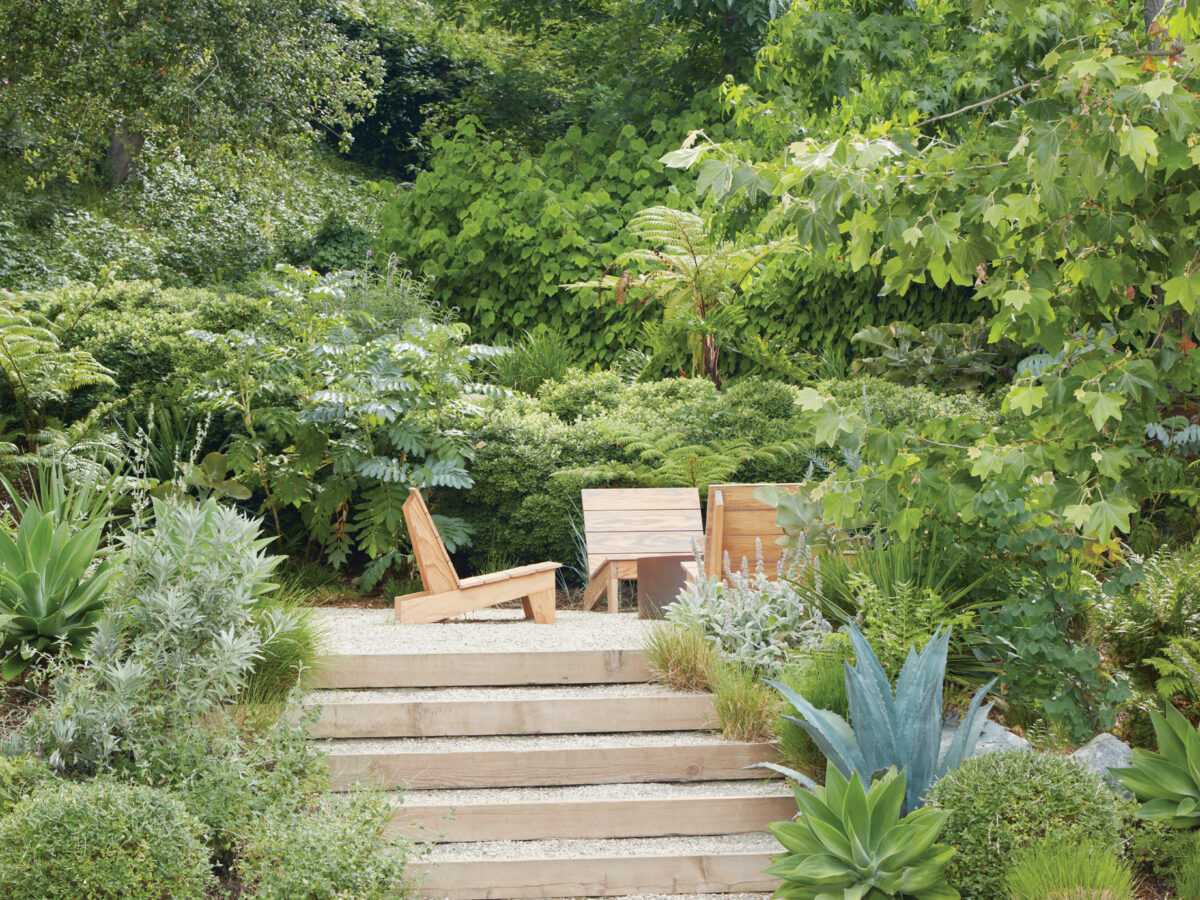
Caitlin Atkinson
While Godshall is the most outspoken of the team, he’s quick to point out his partners deserve as much credit for Terremoto’s work as he does, and Peauroi, Jones, and Wiggins are each super talents in their own right. Nevertheless, Godshall is usually pegged as the firm’s Philosopher King. It’s a designation he likely hates. Then again, it’s pretty much on the money. Perhaps this is because he’s the one who writes the long, meandering, but eminently readable text on the website, or because he talks with a humble but knowing authority, not unlike music producer Rick Rubin. He’s also the guy picking worthy fights on social media—for example, kindly but forcefully challenging the Gamble House in Pasadena for its expanse of water-hogging green lawn.
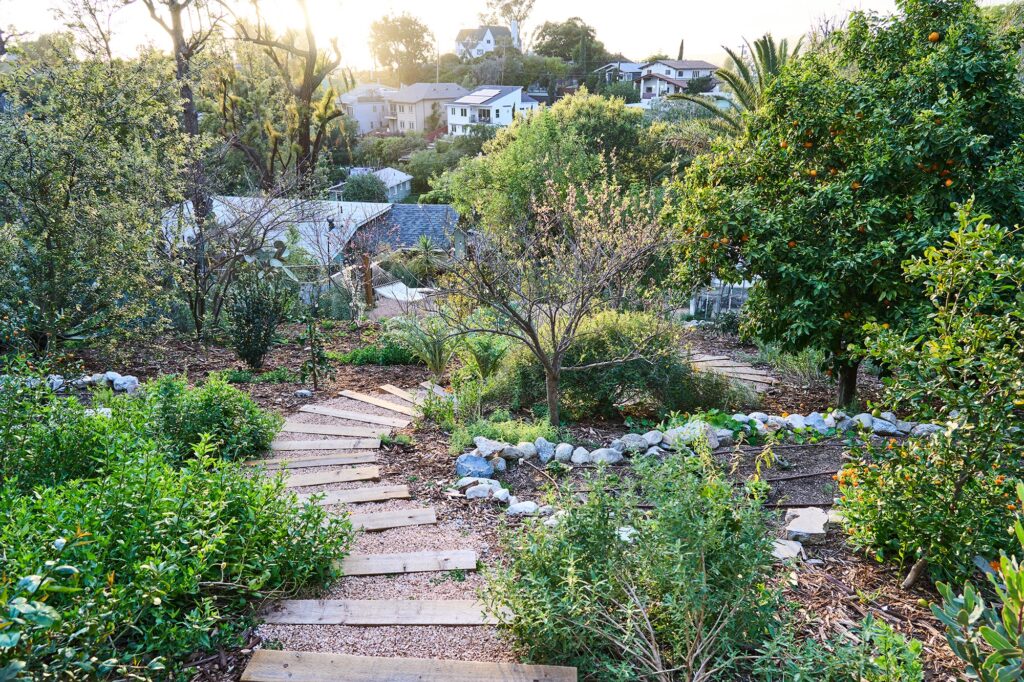
Thomas J. Story
Godshall and Peauroi first met in San Francisco, where they were working at the same landscape architecture firm. “It wasn’t this plotted plan to leave and do our own thing, but we did have a few Chinese-food lunches where we discussed the possibility of doing landscape architecture differently,” Peauroi says. “We’re not very dogmatic about any of it,” he adds. “The only thing we insist on is listening to the land and letting that guide the project.”
Since the two met, the company has expanded, as have Terremoto’s ideas about the role of a garden in a broader cultural and ecological context. Godshall says, “Increasingly we’re like, ‘Well, who are we making these gardens for?’ And then as we think deeply on that, we realize that even a loved garden is probably used and occupied by its humans 10 to 20 percent of its life. So [the garden] can have a usefulness beyond its usefulness to humans. The native plants are useful to the wildlife that co-evolved with them. Pair that with the fact that we live in this kind of fraught moment has brought us to where we are now.” Or, to put it more succinctly, per the syllabus, “[Terremoto considers] ways to create less human-supremacist garden spaces that welcome rather than reject birds, bees, and other animals.”

Thomas J. Story
As a result of this clear-eyed intentionality and generosity, they’re now able to turn down clients. “We’re in this very fortunate position where we’re not hungry for work, which makes us kind of dangerous in a way,” Godshall says. “Because then sometimes people will be like, ‘You don’t want to do my project?!’ ” As a garden nerd and native-plant enthusiast myself, I find this equally human-centered and nature-centered line of thinking thrilling.
But not everyone does. Occasionally, a potential client sees the website, Instagram, or an image on Pinterest and thinks, This is what I want. The client then meets with Terremoto and maybe tells them they want a new swimming pool installed in their backyard. Terremoto, however, is in the process of thinking about how they feel about new pools, and what environmentally conscious alternatives there could be, such as a cedar soaking tub or a natural pool. What is a firm to do? “If they want something different, we don’t tell them, ‘You’re a bad person,’ ” Godshall says. “We just say, ‘We’re not the office for you. We wish you all the best.’ We’re trying to navigate our principles with kindness and not shame.”
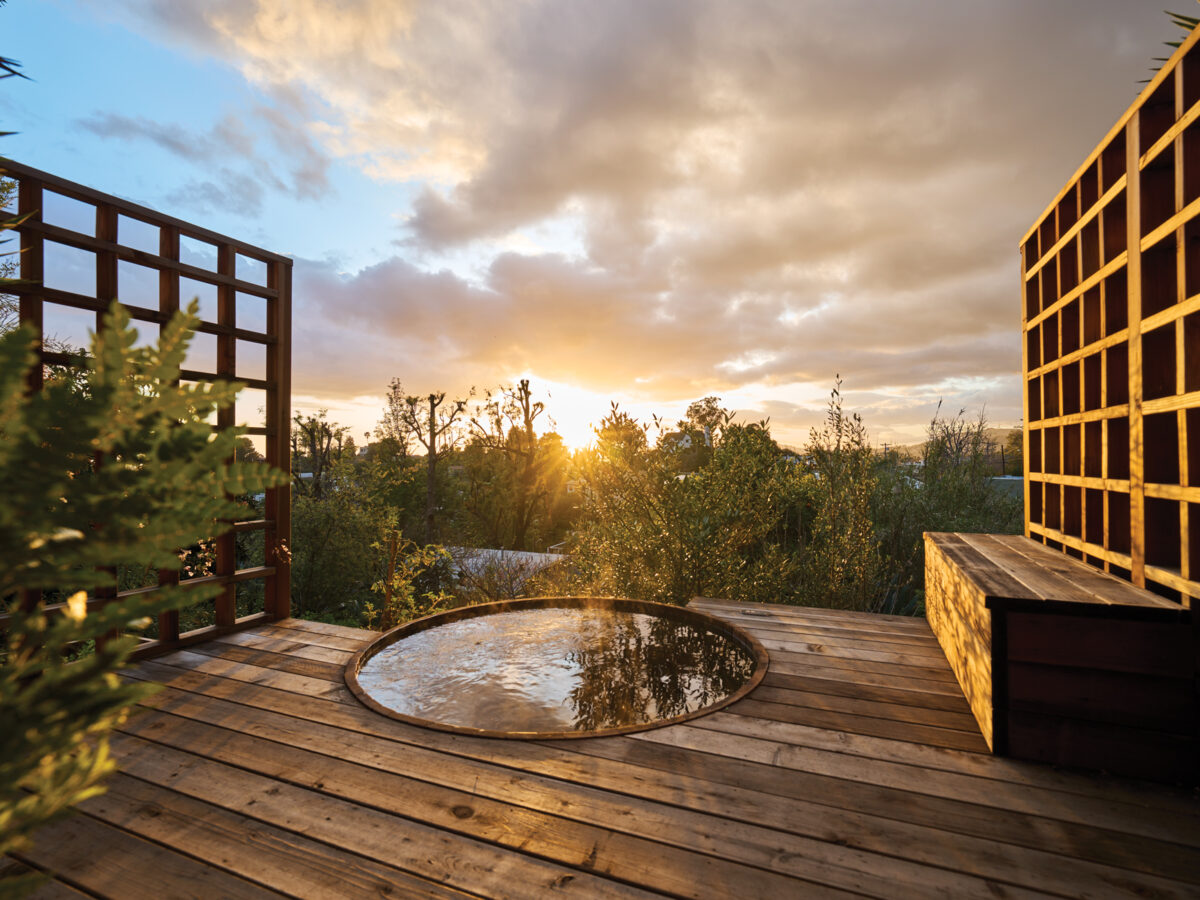
Thomas J. Story
We stroll down the street to see a garden Terremoto recently installed for Godshall’s neighbor, Sara Kramer, one of the chef-owners of the popular restaurant Kismet in Los Feliz. We chat about Terremoto’s decision to stop growing as a company, which is exactly the kind of thing one would expect of Godshall, who is by all accounts a punk rock fan and whom I like to think of as gardening’s answer to Ian MacKaye of Washington, D.C.’s leftist punk band, Fugazi. Godshall can’t help but smile at the comparison. “Good punk rock bands like Fugazi, they walked their talk. And I would like to think that our office walks our talk,” he says.
Walking the talk in this case involves staying “the weird little office that they are,” sticking to the ideology that’s emerged as Terremoto has evolved, and the fact that the company will probably continue not only to change with the times but to define new ideas about what this time should be. While their projects for boldfaced celebrities and companies tend to get all the attention, they make a point of taking on smaller projects. “We make gardens for rich people, but we also make a point to make gardens for people who aren’t rich,” says Godshall. Indeed, during the pandemic the firm committed itself to doing more projects they dubbed “Radical Gardens of Love and Interconnectedness.” Which is to say projects like Sara Kramer’s hillside yard, a steep terraced mix of native plants and fruit trees and raised beds demarcated by “urbanite,” the fancy geological term for reclaimed concrete that was left over from the demolition of the previous cracked back patio. The irrigation is minimal, the native habitat budding, and the environmental impact much less than if they’d gone with thirsty non-natives and trucked in tons of new material to terrace the yard.
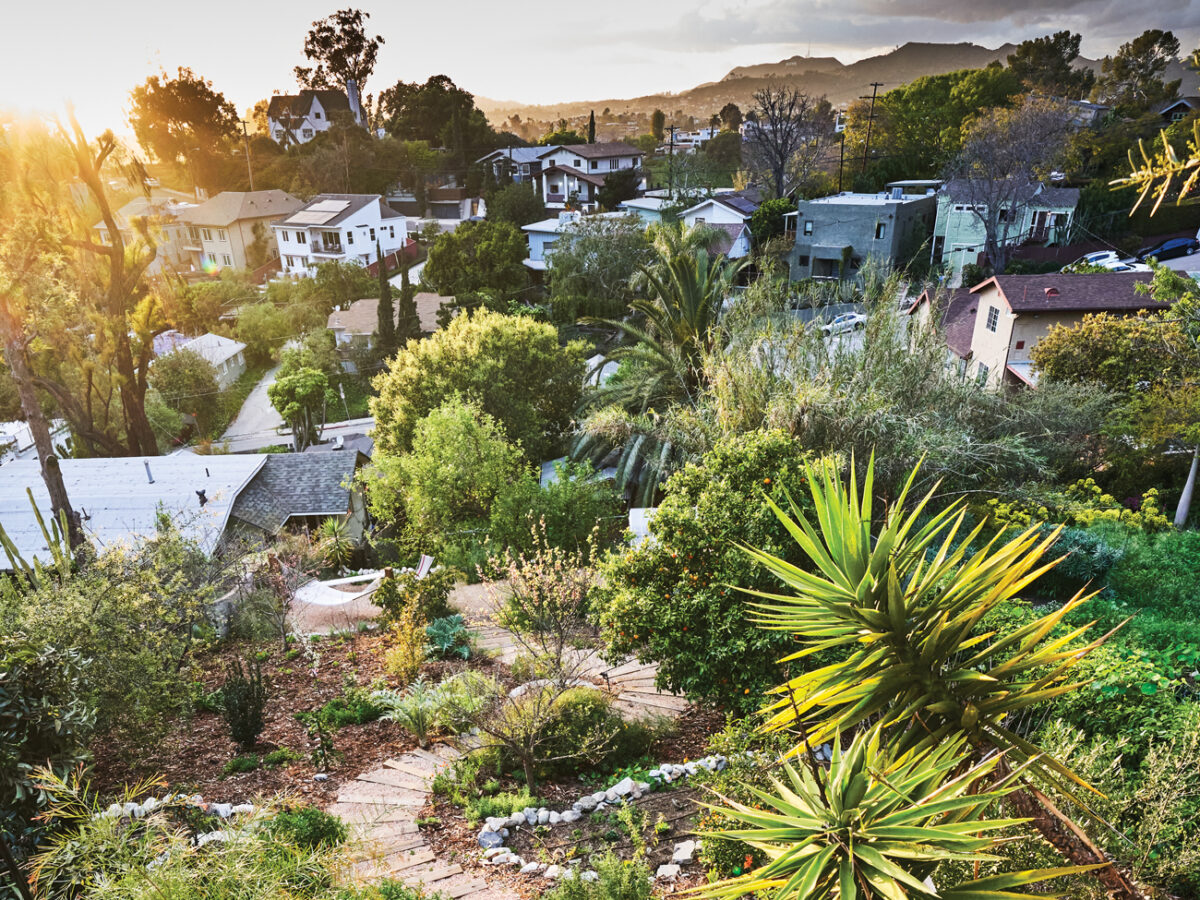
Thomas J. Story
And then there’s Test Plot, an attempt to re-wild Elysian Park in Los Angeles, which, in typically heartfelt and no-holds-barred language, Godshall calls on their site “a dismal dead eucalyptus zombie forest with invasive grasses dominating the ground plane.” He also writes about how much he loves the park and what it could be. Working with the parks department and a community group and volunteer horticulturists, Terremoto is planting small zones with native plant species dating back to “pre-colonial Elysian Park” to both postulate and prove what a local park can be: aesthetically pleasing, restorative to the soul, supportive of wildlife and biodiversity, and true to place.
Which is why I leave you with this thought, again part of the syllabus Terremoto sends to clients: “The process will be both messy and beautiful, and we will make mistakes along the way. But that’s totally OK. Because trying is always better than not trying.” And the results, as you can see, are a little bit wild and incredibly inspiring.
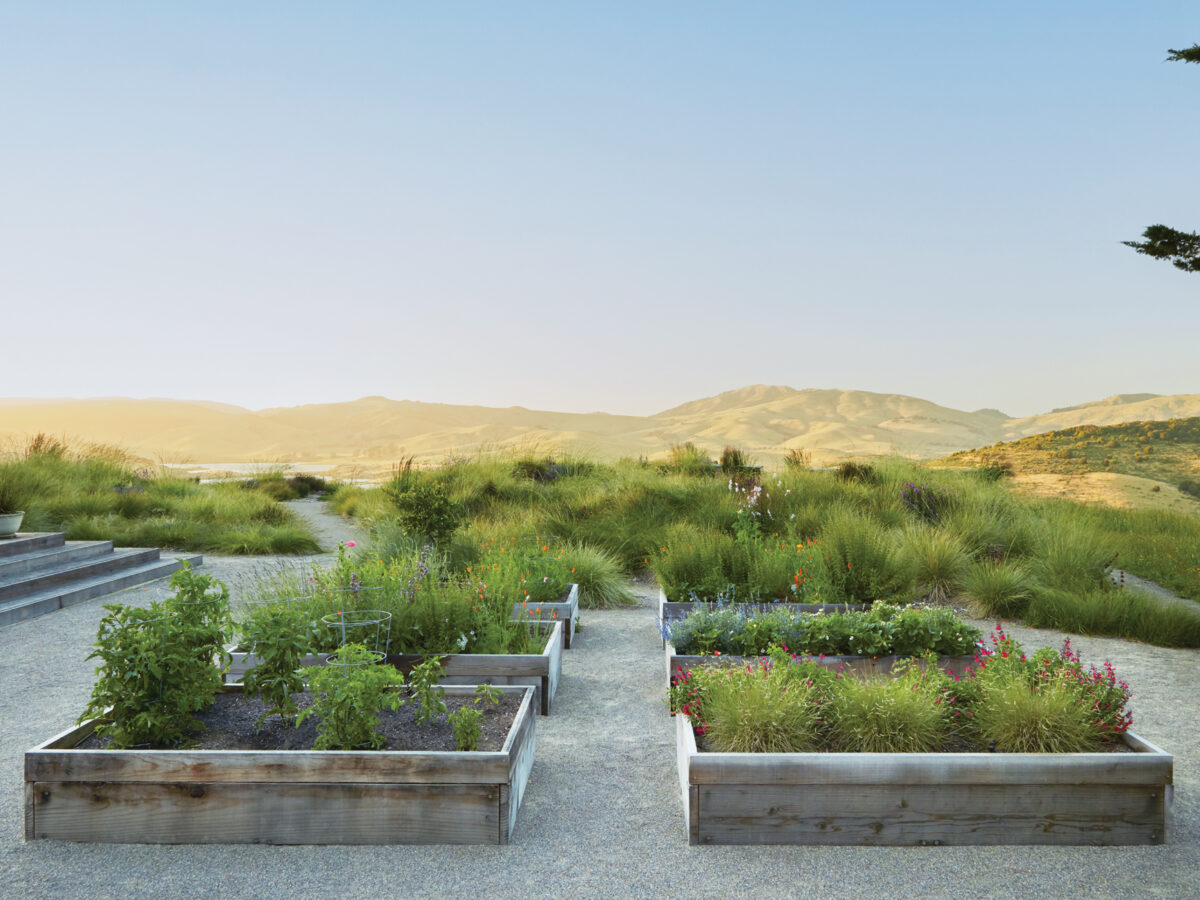
Caitlin Atkinson
Terremoto 101
What makes a garden a Terremoto garden? The syllabus they give to their clients spells out the parameters. Class is in session—see below.
1. Rethinking hardscape projects in consideration of their carbon footprint.
2. Reusing materials on site as much as possible.
3. Considering ways to create less human-supremacist garden spaces that welcome rather than reject birds, bees, and other animals.
4. Prioritizing native and drought-tolerant plants wherever possible.
5. Have slightly uncomfortable but necessary conversations about appropriate wages and compensation both for landscape crews and gardeners.
6. Finding ways to reject the ”race to the bottom” pricing mentality that pervades the landscape and construction industries.
7. Conversations and planning about what ongoing garden care should look like.
8. Discussions about what more community-oriented private gardens could look like.
9. Designing with deep consideration and reverence for the Indigenous and native communities who occupied this land before through truth and reconciliation (financial support for Indigenous land trusts).
Read the Current Issue Here!
Get one year of Sunset—and all kinds of bonuses—for just $29.95. Subscribe now!
